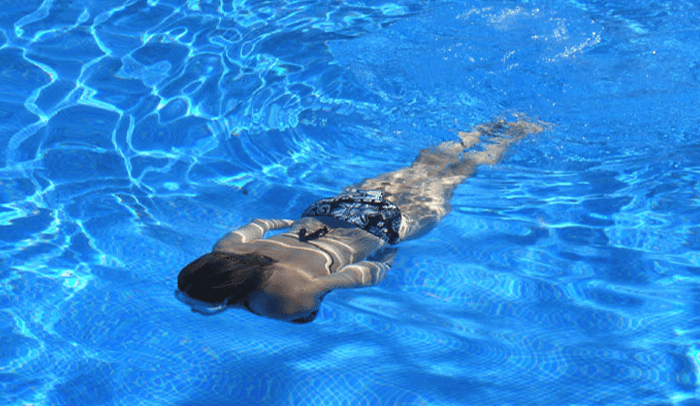Shocked Pool? Does it mean Electrified water? Of course not. It makes sure you have a safe and smooth swimming experience on each dip. It’s like cleaning the pool water after heavy use.
I just had a pool party yesterday? It’s high time to shock the pool and make it cool again.
However, what happens if you swim in a shocked pool. The outcome depends on how long you have waited after the shock. Let’s not guess anything and dive deep into the water to know it better.
Contents
What is a Pool Shock?
It is a process of killing microbes like bacteria and algae in pool water using different compounds. The method may sound simple but require meticulous attention in every step.
Typically, three types of Pool Shock chemicals are used in every pool in the country. They serve different purposes according to their ingredients.
- Granular Chlorine (Calcium Hypochloride) – Kills Algae and Bacteria.
- Dichlor (Dichloroisocyanuric Acid) – Kills Algae and Bacteria.
- MPS (Potassium Peroxymonosulfate) – Neutralize Ammonia and Remove Odor
What Happens If You Swim in A Shocked Pool?
If you wait up to 48 hours after the pool shocking, nothing happens.
But, sometimes, we got too excited to dip in and jump into the pool almost immediately after shocking. Now things can go wrong.
We have rounded up all the pool chemicals’ risks if you come too close to them too quickly.
Skin Irritation and Rashes
No living organisms like too much chlorine, nor does your skin. High chlorine concentration of the Dichlor and Granular Chlorine literally burn the skin surface and make things uncomfortable.
If you already have a skin issue, things can go terrible. Chlorine dehydrates the cells and burns them. It will compound the irritation if you already have one.
Do not get surprised if you see rashes after coming out of the pool. Perhaps you dive in there too quickly.
Dryness and Itching of the Eye
Chlorine makes things dry and hard. Your eye, which needs constant moisturizing, won’t feel comfortable contacting high chlorine.
You will realize that you dipped too quickly into a shocking pool by severe itching and dryness in the eye. Have you noticed how things feel different each time you swim into a different pool? It’s the difference in chlorine concentration that makes the difference.
Chlorine level needs to be around 5-ppm in the pool for a smooth swim.
Discoloration of the Clothing
I was so excited about the new pool in our apartment complex and bought a new swimsuit for my inauguration dive. However, the excitement fades away when I find all the shades in the trunks are also faded.
It was me who skipped the notice to wait for at least 24-hours.
Chlorine is very harsh to the fabric color. Too much of the chemicals can fade any color and turn the fabric fade or white. Use the same precaution when you use Clorox to clean the kitchen top or sink.
Poisoning
Yes, chlorine is highly poisonous for you. It won’t make any problem as long as the concentration is around 5-ppm. But immediately after the pool shocking, the amount is a few hundred times more than the normal. If you digest the water, then things can become severely dangerous.
In the case of chlorine poisoning, immediately call 911 or the Poison Control Centre for assistance. Do not try to induce vomiting unless instructed by health care professionals. Make the person sip water if possible.
Severe Digestive Issue
Most of the time, chlorine digestion creates severe digestive issues. You can feel stomach cramps, aches, diarrhea, nausea, and dizziness.
It is best to drink a lot of water to dissolve the chemical. Lesser concentration will lessen the severity of the problem. If the person is still having the symptoms call 911 or Poison Control for assistance.
Breathing Problem
Chlorine vapor is equally dangerous like liquid for our health. The vapor directly affects the inner liners of the lungs and makes breathing difficult. If you have asthma or chronic bronchitis, things can go terrible.
If someone has the chlorine vapor inhalation, give artificial respiration by mouth. Do not wait to call 911 for immediate medical assistance.
How Long Should I Wait for after Pool Shocking?
The wait time depends on the concentration of shocking chemicals—the higher the concentration, the longer the wait time.
You will find the waiting time instruction on the package of the chemicals. But if you are not convinced or hesitant, it’s better to test the water.
It is safe to dive in the pool after shocking if the Chlorine concentration is around 5-ppm. If you do not have the testing kit, wait for up to 24 hours for safe and smooth swimming.
How Often Should I Shock the Pool?
It is always better to shock your pool once a week during summer. Many people use the same pool that makes the water too crowded with both dirt and microbes. So clean it frequently.
Each time I have a pool party at home, the first thing I do the next morning is pool shocking. I will suggest you do the same for clean and cool pool water.
Rainwater is another familiar foe of pool water. It contains a lot of acidic and other harmful components. It is advised by the pool maintenance companies that you should shock the pool after heavy rain.
Let’s Clean and Conclude
Now you know what happens if you swim in a shocking pool. And I am sure you won’t dive in immediately after a pool shock treatment.
If you want to keep yourself safe from any chemical effects and enjoy a smooth swim, wait for at least 24-48 hours after the treatment.

